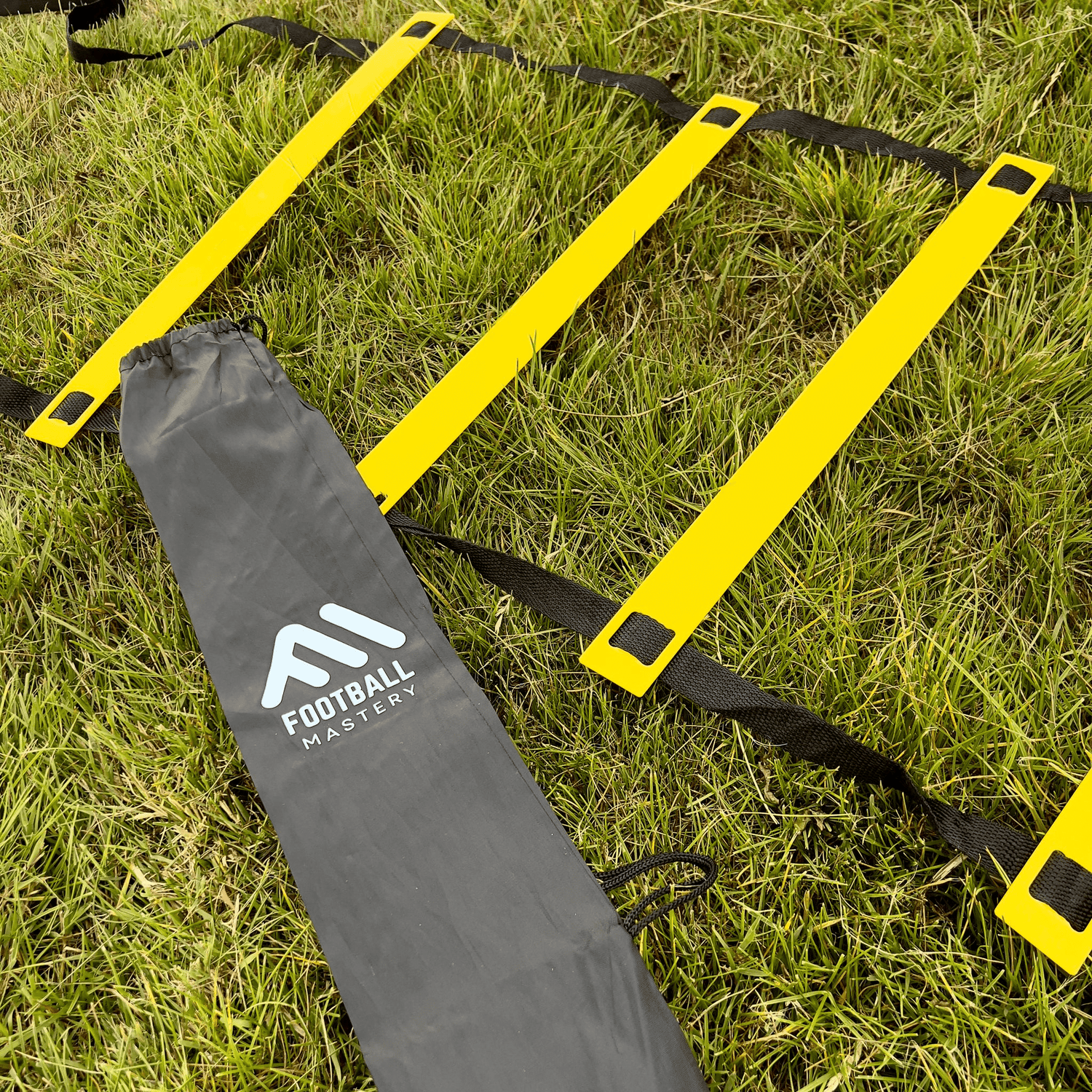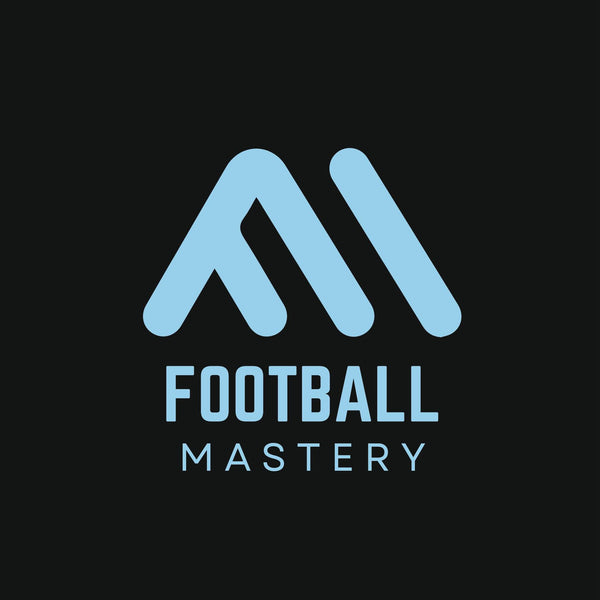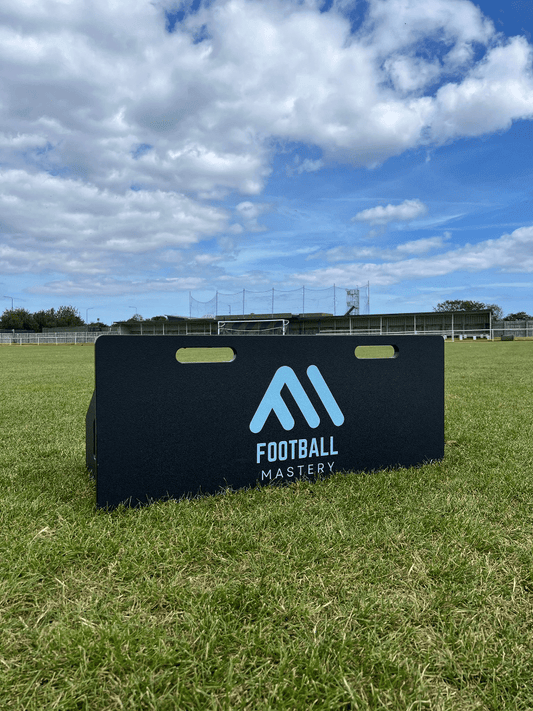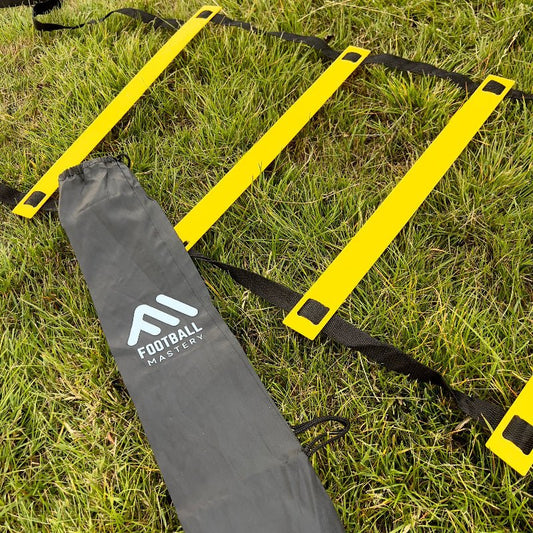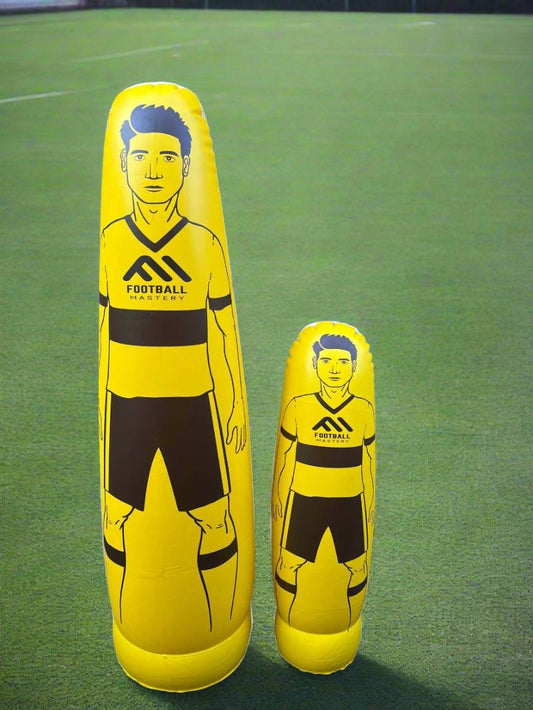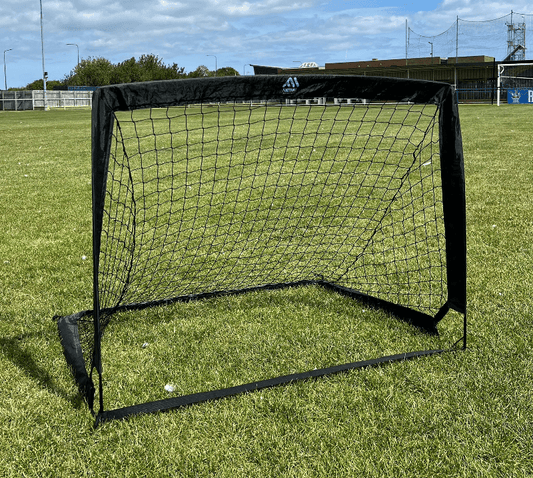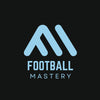
Best Football Rebound Boards of 2025 Ranked and Reviewed
Share
Looking for the best football rebound board in 2025? This guide highlights the top rebounders on the market—evaluated by training performance, build quality, and versatility. Whether you're perfecting passing accuracy in the garden or sharpening reflexes for match day, we break down what makes a top-tier rebounder board in 2025. Discover models suited for kids' training, solo sessions, or full team practice, and understand the key product features to look for: from dual surfaces and adjustable angles to portable frames and elasticated netting. We also include expert recommendations, buyer insights, and standout performers—along with links to some of the most trusted rebound boards from Football Mastery, a premium UK brand dedicated to elevating grassroots and elite football training alike.
A New Era of Training: The Rise of the Modern Rebound Board
In 2025, the humble football rebound board has evolved into one of the most valuable pieces of equipment for players and coaches alike. Whether you're a midfielder practising crisp first-time passes or a goalkeeper looking to improve reactions under pressure, these boards are no longer just a flat surface—they're an integral part of modern skill development.
“Gone are the days of kicking a ball against the garage door. Today’s rebounders simulate real match scenarios, offering dynamic feedback to every touch.”
The key lies in how adaptable these tools have become. From multi-angle rebounders for high-ball control to compact rebound boards that fit neatly in a garden setup, there’s something to suit every training style and space.
What Makes a Great Rebounder in 2025?
When evaluating the top-rated rebounder boards, we considered a few core criteria:
-
Build Quality & Materials
Look for boards built with weather-resistant components and tension nets or solid kickback panels that maintain performance over time. -
Training Versatility
The best rebounders cater to a wide range of drills—from ball control and passing accuracy, to reflex training and technique improvement. Adjustable angles and dual surfaces provide the flexibility needed for position-specific training. -
Ease of Use & Portability
A quick setup, foldable design, and lightweight build mean your board can go from garden to pitch without hassle. -
User Fit
Boards should suit different experience levels. What works for kids football training won’t necessarily meet the demands of professional teams or schools and academies.
For reference, check out our complete Rebound Boards Collection to see the options available.
Football Mastery Rebound Board: A British Engineered Standout
Our flagship Football Mastery Rebound Board represents everything we've just described—and more. Designed and manufactured in the UK, it’s crafted to offer elite-level performance with everyday usability.
Key features include:
-
Dual-angle adjustable panel: Switch between ground passes and lofted returns
-
High-density kickback board: Offers a realistic rebound effect, even under power
-
Lightweight yet stable: Built for easy transport but firm enough for strong strikes
-
No mesh, no fuss: Unlike net-based designs, this board offers a consistent and clean return every time
It's a favourite among youth academies, but equally perfect for home training, garden football, or solo technical work.
Best Use Cases: Training Drills That Actually Work
To truly see the value of a rebounder, it’s worth understanding how versatile they are in action. Here are some real-world training examples to highlight how different types of players benefit:
1. Passing & Receiving
Use a quick return board to fire passes at varying angles. This is great for developing one-touch play and spatial awareness. Midfielders can simulate receiving under pressure while keeping their head up.
2. Shooting Drills
Place the board at an angle in front of goal to receive unpredictable rebounds and work on volleys or snap shots. It mimics deflections and loose balls that often happen in the box.
3. Goalkeeper Training
A reflex improvement board can simulate quick redirects, especially when combined with multi-angle setups. This is ideal for sharpening reaction time and hand-eye coordination.
4. Youth Development
Smaller, more portable rebounders are excellent for kids football training, particularly those starting out. They provide hours of fun practice while reinforcing key technical fundamentals.
If you're looking for a complete package, our Football Mastery Bundles offer great value for money by combining boards with cones, balls, and setup tools.
Top Rebound Boards of 2025: Ranked and Reviewed
After extensive hands-on testing, coach feedback, and customer reviews, we've curated a shortlist of this year's best rebounder boards. These models stand out for their innovation, durability, and how well they simulate match-like play—whether you're working on solo training, team practice, or goalkeeper drills.
Below is a breakdown of top-ranked boards, covering different player needs, skill levels, and environments.
1. Football Mastery Rebound Board – Elite Performer for All Levels
-
Best For: Versatile, all-weather performance
-
Price Range: Mid to Premium
-
Available at: Football Mastery Rebound Board
The Football Mastery board leads the pack in 2025. Made with impact-resistant composite and engineered for stability, it’s a standout for home training, professional clubs, and schools & academies.
Why it ranks high:
-
Reliable bounce back from short or driven passes
-
Adjustable angle allows for both ground and lofted returns
-
No netting, meaning zero sag or snags over time
-
Designed with portability in mind (fits in most car boots)
-
No setup required—unfold and play
“The closest thing to training with a teammate when you’re on your own. Precision, power, and predictability in one.”
If you're serious about skill development or looking for an elite-level ball return device, this board won’t disappoint.
2. QuickPlay Pro Rebounder – A High-Tension Net Option
-
Best For: Players who prefer net-based rebounding
-
Strength: Tension net delivers explosive returns
-
Notable Feature: Dual-angle panel for varied rebounds
This is a rebound net rather than a kickback board, but it earns its place due to its strong multi-angle rebounder functionality and wide size options (up to 7x7 feet).
Ideal for:
-
High-rep drills
-
Midfield passing and receiving
-
Developing fast feet and quick ball control
The mesh design isn’t quite as consistent over time as a solid board, but it excels in reflex training and speed and agility sessions.
3. Football Flick Urban Rebounder – Dual Surface & Entry Level Friendly
-
Best For: Mixed-surface rebound training
-
Standout Feature: Dual-sided mesh for medium and fast returns
-
Bonus: Can be set at 6 different angles
Football Flick’s model is a favourite among younger players and hobbyists due to its fun practice factor and ease of setup. It’s foldable, relatively light, and provides variety in rebounder drills.
While it doesn’t have the same pro-grade feel as a kickback board, it performs well in garden football setups, especially for kids’ football training.
Check out our full range of boards, including compact and youth-friendly models in our Rebound Board Collection.
4. Airwave Strike Rebound Goal – Best for Backyard Sessions
-
Best For: Combining goal practice and rebound training
-
Type: 2-in-1 goal and rebounder
-
Materials: Steel frame with target holes
If you're coaching in the garden or want your child to practice independently, this goal-rebounder combo is an excellent investment. While not designed for intense club use, it holds up well for casual, frequent use.
Great for:
-
Target shooting
-
Receiving rebounds for volleys
-
Entry-level ball control drills
The inclusion of target zones makes this a good introduction to position-specific training, especially for young attackers.
5. RapidFire Rebound Board – Lightweight, Realistic Return
-
Best For: On-the-go players
-
Build: Polypropylene composite board
-
Feature Highlight: Foldable legs and adjustable return angle
The RapidFire board represents the growing trend of training wall for football that mimics the hard, clean rebound you'd expect in a match setting. It’s built for speed training, realistic passing feedback, and compact storage.
For players without the luxury of regular teammates, it delivers consistency and quality—traits often missing in net-based options.
Comparing Rebounder Types: Mesh vs Board
To help clarify the differences:
| Feature | Mesh Rebounder | Kickback Board |
|---|---|---|
| Bounce Quality | Varies by tension/net sag | Consistent, hard return |
| Angle Adjustability | Often very flexible | Limited to 1–2 angles |
| Maintenance | May stretch/tear over time | Long-lasting composite |
| Portability | Foldable, lightweight | Compact, folding available |
| Suitability | Casual & reflex drills | Pro-level ball work |
If you’re after realistic, repeatable touches—particularly for passing accuracy or shooting drills—a solid board is superior. However, mesh nets excel in goalkeeper training, fun practice, and fitness-style sessions.
Tips Before You Buy
Before investing in a rebounder, consider the following:
-
Where will you use it?
A compact rebound board is better suited for small gardens, while larger rebound nets may need open space or club facilities. -
What skills are you targeting?
Want to improve your first touch? Opt for a board with a predictable return. Working on reflexes? Look for rebounders with tension nets and varied bounce. -
Who is using it?
Younger players will benefit from lighter, more forgiving setups. Advanced players should seek high-performance boards that replicate match-day intensity. -
Is it portable?
A foldable design and quick setup make your board usable anywhere—from the park to the pitch.
How to Choose the Right Rebounder: A Practical Buyer’s Guide
You’ve seen the top contenders—but choosing the right football rebound board for your situation requires a little more than comparing price tags. To make sure you’re investing wisely, we’ve assembled this quick guide for all types of players and coaches.
Key Buying Considerations
1. Training Goals
Different boards suit different outcomes:
-
Passing accuracy & first touch: Go for a kickback board with a flat or slightly angled surface.
-
Reaction time & agility drills: Choose a tension net rebounder that fires the ball back unpredictably.
-
Shooting drills: Boards with target zones or dual-angle adjustability will provide greater variation and challenge.
-
Goalkeeper training: Look for multi-angle rebounders with fast returns and potential for hand-eye coordination drills.
If your training involves multiple skill areas, opt for a rebounder with dual surface or adjustable angles to expand your options without needing several tools.
2. Environment & Space
-
Indoor spaces: Choose a compact rebound board with rubberised feet to protect flooring.
-
Small gardens: A foldable, single-panel model with minimal ground footprint is ideal.
-
Pitches or schools: Larger rebound walls or portable trainer ramps can support group use and more intensive sessions.
Boards that fold flat are especially handy for schools & academies, where storage space may be limited.
3. Build & Materials
For long-term performance, your rebounder should be:
-
Weather-resistant – able to withstand year-round UK conditions.
-
Impact durable – high-density polymer or treated aluminium are excellent choices.
-
Stable under pressure – especially when used on hard ground or during high-power drills.
Net-based rebounders should feature elasticated netting and reinforced frames to avoid sag over time.
4. User Type
-
Beginners / Youth players: Go for lightweight, easy-to-use setups with fun practice features.
-
Adult players / Semi-pros: Prioritise technique improvement tools with clean, hard rebounds.
-
Coaches: Consider boards suitable for multiple players with a focus on position-specific training.
Our product bundles include accessories suited for every level—see what’s included in our Football Mastery Bundles.
Maintenance Tips: Keeping Your Rebounder Match-Ready
To ensure your rebound board continues delivering top performance week after week:
-
Store indoors or under cover when not in use
-
Wipe down metal or plastic surfaces regularly to avoid weather wear
-
For net-based rebounders, check tension regularly and retighten or replace as needed
-
Avoid using on uneven or rocky surfaces to preserve ground pegs and frame balance
-
If foldable, lock hinges or supports in place to prevent injury or collapse during drills
Taking a few minutes each week to maintain your rebounder will prolong its life—and protect your investment.
The Future of Rebound Training: What’s Next?
The modern rebound board isn’t just for pass-and-return drills anymore. Several new innovations are pushing the category forward, especially in 2025 and beyond.
1. App-Integrated Rebounders
Training tech is booming. Some boards now come with sensors or companion apps that track:
-
Pass count and accuracy
-
Return speed
-
Shot placement (for target zones)
This kind of rebounder with app integration offers not just feedback—but the motivation and gamification players need to push harder in solo sessions.
2. Eco-Conscious Rebounders
As sustainability becomes a growing concern, newer boards are being constructed from eco-friendly materials like recycled plastics or responsibly sourced composite wood. A rebounder that’s good for your game and good for the planet? That’s a win-win.
3. Smart Multi-Angle Designs
Expect to see more skill ramp rebounders and training walls that replicate a variety of in-game passes—through-balls, aerial switches, rebounds at awkward angles—perfect for match simulation.
Final Thoughts: What’s the Best Rebounder for You?
Whether you’re just starting out or preparing for academy trials, there’s a board out there that fits your training style, skill level, and budget. The best advice? Choose something that challenges you but also excites you to get outside and train. Because the more fun you have with it, the more likely you are to improve.
Still unsure? Browse our full range of rebound boards, accessories and bundles over at Football Mastery—we build for British weather, British players, and world-class progress.
Thanks for reading our full guide on the best football rebound boards of 2025. If you found it useful, consider sharing it with your team, coach, or fellow players who could benefit from the right training gear this season.
Need a recommendation tailored to your setup? Reach out via our site—we’re happy to help.
Frequently Asked Questions (FAQ)
1. What is the difference between a rebound board and a rebound net?
A rebound board is typically made from a solid material like high-density composite or polypropylene, offering a clean, consistent return with little give. A rebound net, on the other hand, uses elasticated mesh stretched over a frame, delivering a springy, sometimes unpredictable rebound. Boards are often better for ground passes and technique, while nets are great for reaction and reflex training.
2. Can I use a rebound board on artificial turf or hard courts?
Yes, most modern rebound boards are designed to be used on a variety of surfaces, including 3G/4G turf, concrete, and wooden indoor flooring. However, ensure the board has non-slip rubber feet or anchoring options to prevent movement during use.
3. Do football rebound boards require assembly?
Most kickback boards are either pre-assembled or require minimal setup. Some fold flat and open in seconds, while others may need bolts or angle adjustments. Always check if tools are included or required before purchase.
4. What size rebound board is best for small gardens?
For compact spaces, look for boards around 90–100 cm wide with a foldable design. These offer plenty of training functionality without taking up unnecessary room, and they can be stored easily in sheds or car boots.
5. Is a rebound board suitable for very young players (under 8)?
Yes, but make sure the board is lightweight, low-impact, and suited to a child’s strength and ball control level. Avoid heavy-duty or overly stiff boards that could cause frustration or injury during early skill development.
6. Can I use a rebound board for other sports besides football?
Some rebounders are labelled with multi-sport functionality and can be used for netball, rugby passing, or even cricket fielding drills. That said, rebound boards designed specifically for football may not deliver the same performance for other ball types.
7. What is the lifespan of a high-quality rebound board?
With proper maintenance and storage, a premium rebound board can last 3–5 years or more, even with frequent use. Durability depends on material quality, weather resistance, and how it's stored (indoors or under cover when not in use).
8. Do rebound boards come with warranties or guarantees?
This varies by brand. At Football Mastery, for example, our rebound boards are backed by quality assurance policies and customer support. Check individual product pages for specific warranty information.
9. What drills can I do with a rebound board?
There are dozens of effective exercises, including:
-
One-touch and two-touch passing drills
-
First-touch control with both feet
-
Wall volleys and snap shooting
-
Reaction training for keepers
-
Positional passing (e.g., simulating midfield ball recovery)
We recommend following a structured plan, like those offered in our Football Mastery Bundles, which include setup ideas and training cones.
10. Are there budget rebound boards that still offer good performance?
Yes—while high-performance boards offer more precision, several affordable rebounders offer great value for money for casual or youth players. Look for entry-level models with solid core features like adjustable angles, compact size, and weather-proofing.
